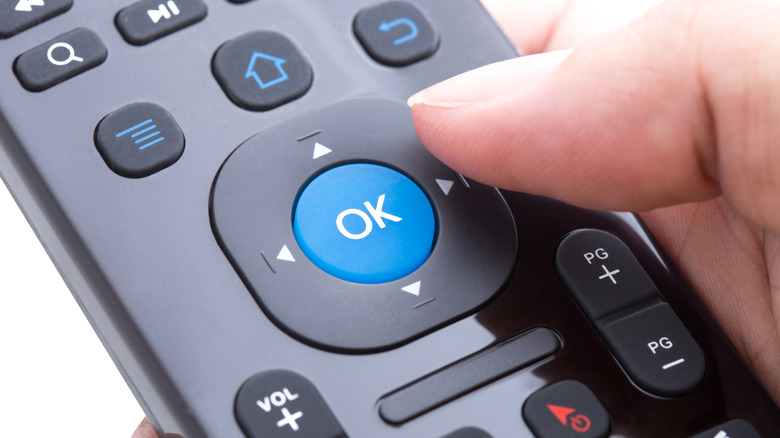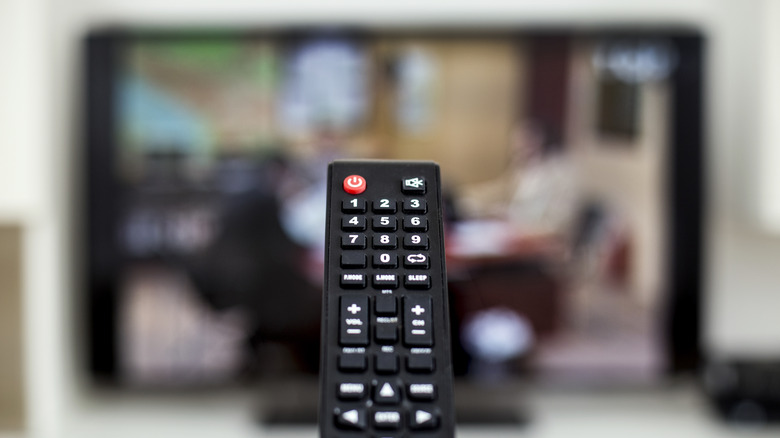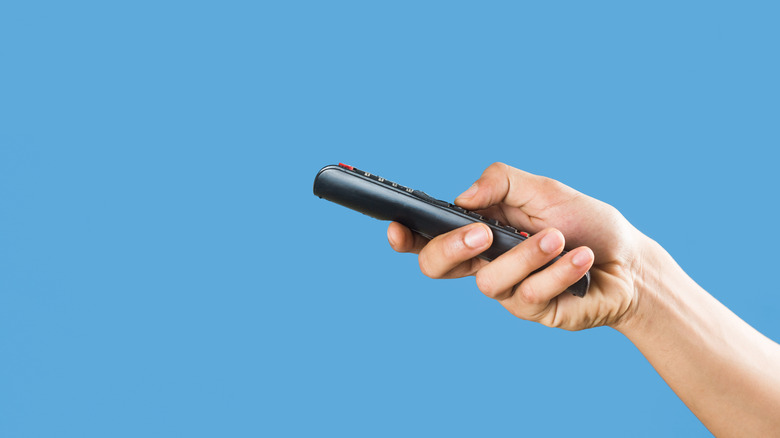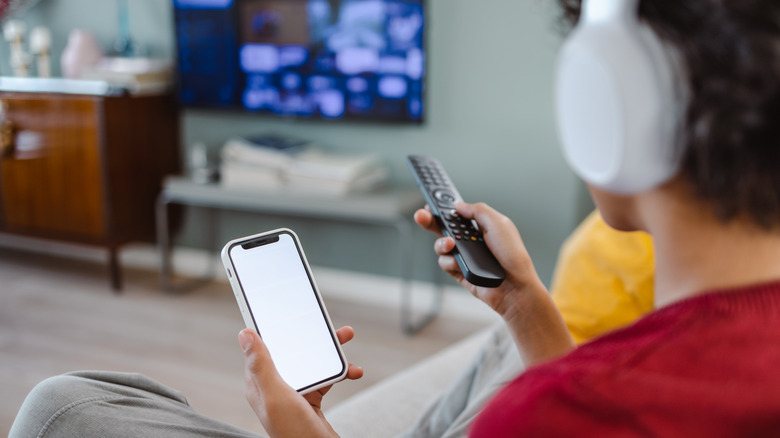Are Universal Remotes Really Universal, And How Do They Work?
Between juggling remotes for TVs, surround systems, cable boxes, streaming devices, and more, it's easy to become overwhelmed or lose track of them. Whether they slip between the cushions on your sofa or get lost somewhere else, remotes can easily wander astray, and keeping track of all of them can easily become next to impossible. Luckily, there's a convenient solution: universal remotes.
As the name suggests, these remotes are designed to work with any device, allowing you to manage many utilities from different brands and manufacturers. Lots of universal remotes come with special features like glow-in-the-dark buttons and battery backup so you don't lose your settings when you change the batteries.
Today's universal remotes don't just control your entertainment systems. Some of them can also control smart home devices. So, as you're flipping through channels on your TV, you can also press a button to adjust the thermostat or turn on the lights. Some of the best universal remotes for your TV come with touch screens that allow you to scroll through a list of your devices and favorite channels. Others store a Roku or Fire TV remote in a slot on the back. However, before you get started tapping into all of these features, you'll have to program your universal remote to work with all of your devices.
Are universal remotes really universal?
There are two types of universal remotes: multi-brand and learning. The type you choose will determine how you go about setting it up and how many of your device's functions you can control with it.
You won't have to spend much time setting up a multi-brand remote because it comes preprogrammed with a database of codes for use with devices from different brands. With these remotes, you won't have to spend time manually entering codes or configuring them to work with the different devices in your home entertainment system; they're ready to use out of the box. Multi-brand remotes can typically control up to four devices and can only be used for basic functions like controlling the volume or changing channels.
Learning remotes are the closest you can get to the true universal remote experience. These remotes can learn commands from the original manufacturer's remotes that they are designed to replace. All you have to do is point the original remote at the learning remote to transfer the commands from one remote to the other via infrared signals. Because of this technology, you can use a learning remote with many more devices. However, depending on the model, you also may be able to program some multi-brand remotes to work with a new device.
How universal remotes work
Just like the way these remotes are programmed has changed over the years, so has the technology that powers them. If you've used an old-school universal remote, you know that once upon a time, you'd have to manually enter a code to connect it to the target device. With modern universal remotes, this process is automated. While universal remotes like Xfinity can still be programmed manually, they also have an auto-code search function you can use to set up the device.
Universal remote technology can be divided into three main categories: infrared (IR), Bluetooth, and Wi-Fi. Although a lot has changed when it comes to universal remotes, one thing has remained the same: IR is still the most common technology used. IR remotes use a small red light that communicates with devices connected to the remote. This technology requires a direct line of sight between the remote and the device because IR signals can't penetrate things like walls and other obstacles.
Bluetooth, Wi-Fi, and smartphone universal remotes
For those looking to get more out of their universal remotes, Wi-Fi and Bluetooth-enabled remotes are an option. These remotes can communicate without a direct line of sight, allowing greater flexibility for device placement in home entertainment setups. For example, if you want to store a device inside a cabinet or in another room, you'd still be able to control it with a Wi-Fi or Bluetooth-enabled universal remote.
Wi-Fi remotes can also connect to your home network to manage compatible smart home devices along with your home entertainment system. These remotes come with other features like real-time updates from internet sources on a small screen on the remote.
These days your smartphone, whether its an Android or an iPhone, can probably be setup to your smart TV as well. So if you don't want to invest in one of these standalone remotes, you can consider turning your Android phone into a universal remote. Plus, streaming devices like Roku, Apple TV, and Fire TV have smartphone apps that make them easy to use with your phone. Even if you don't have a streaming device or smart TV, you're not out of luck. You can buy an IR blaster to help use your phone as a remote control.



